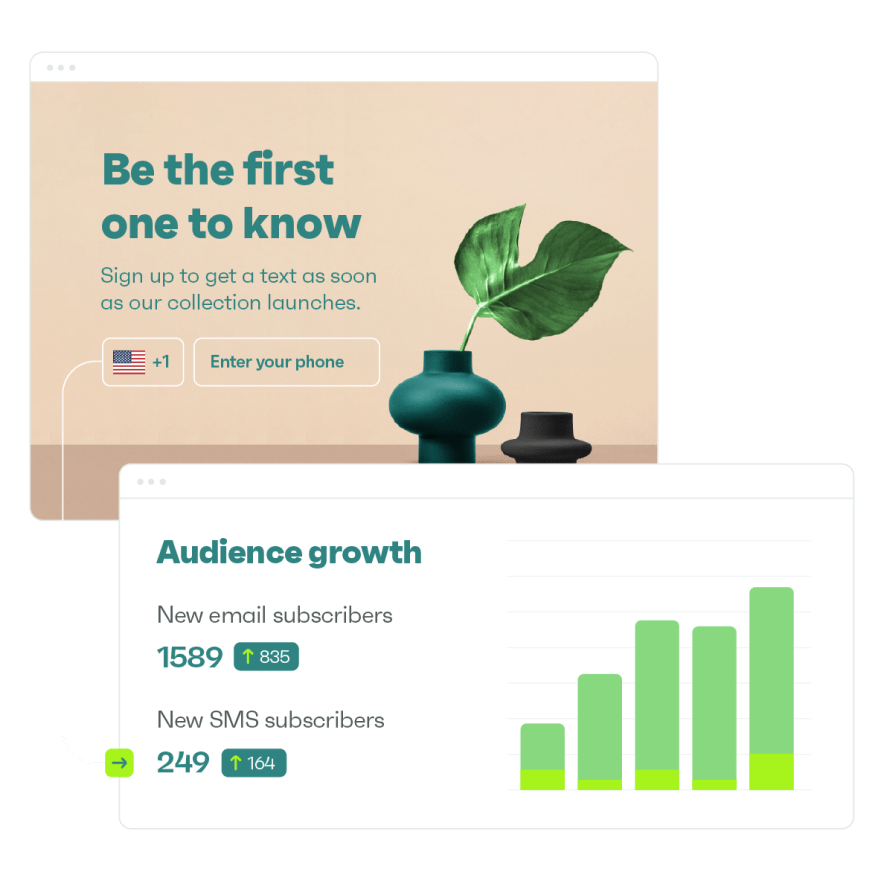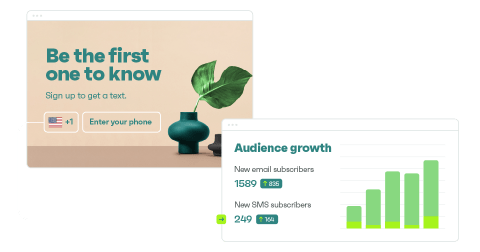Drive sales on autopilot with ecommerce-focused features
See FeaturesHow to Create Relevant Product Recommendations that Increase Sales
Have you ever received a product recommendation that just didn’t make sense?
We’ve all made that “we need this right now” kind of purchase. For me, it was a new toilet seat. According to the emails and ads I received for several weeks after, you’d think I was a grand collector of glamorous toilet seats of all ranges and sizes. Naturally, none of those emails were successful in converting because they weren’t relevant to me.
In ecommerce, you always want the message you send to be relevant to your customer. Personalization is key—over half of US consumers say they were more likely to purchase if their content is personalized.
Product recommendations are no different: whether you’re recommending products on your site or in your email campaigns, if the product is relevant to your customer, they’ll be more likely to buy. And for something likely to make up over a third of your site revenue, it’s important to get it right.
In this piece, I’ll outline exactly how personalized product recommendations impact your store, how they work, and how to use them effectively both on-site and in your email marketing.
4 Benefits of Personalized Product Recommendations for Ecommerce
Product recommendations are products that appear onsite, in emails, or in other marketing messages. They recommend a product to a customer based on a set of data, such as what other customers purchase, their own shopping behavior, recent purchases, or simply bestsellers that the merchant wants to showcase.
Here are four statistics that show the effects product recommendations have on ecommerce.
- Conversion rates: that’s right—product recommendations will impact your bottom line. According to a study by Barilliance, when a shopper interacts with product recommendations, they’re 550% more likely to purchase.
- Average Order Value: Not only are customers more likely to purchase when interacting with a product recommendation, but they’re 369% more likely to purchase more.
- Brand Loyalty: Adobe recently released research stating that 49% of customers who interacted with personalized content said they became more loyal to the brand. Personalizing your product recommendations might just be what makes your customer choose you over a competing ecommerce brand.
- Cart Abandonment: Product recommendations can even reduce cart abandonment by as much as 4.35%. Considering that 7 of 10 carts are abandoned, drecovering even a relatively small percentage of those sales is significant.
By combining them with ecommerce personalization, product recommendations become a powerful tool that significantly impacts the revenue you drive.
You don’t have to wait to send smart product recommendations: start using Omnisend for free and send targeted products in your next email!
How to Use Product Recommendations on Your Ecommerce Site
Ecommerce product recommendations aren’t an exact science, but with customer data, you can come close. Think about the different stages of your customers’ journey: what recommendation will be the most relevant to your customer at that moment in time?
To make it simple, I’ve broken this down by where certain types of product suggestions should go on your site.
1. Homepage: Product Recommendations Above the Fold
What’s the first thing you want your customers to see when they land on your ecommerce site?
Here, you should be recommending best-selling products, especially for brand-new customers. If you have promotions or sale items, these should be recommended as well. Above-the-fold product suggestions are great for a mix of seasonal items and promotions.
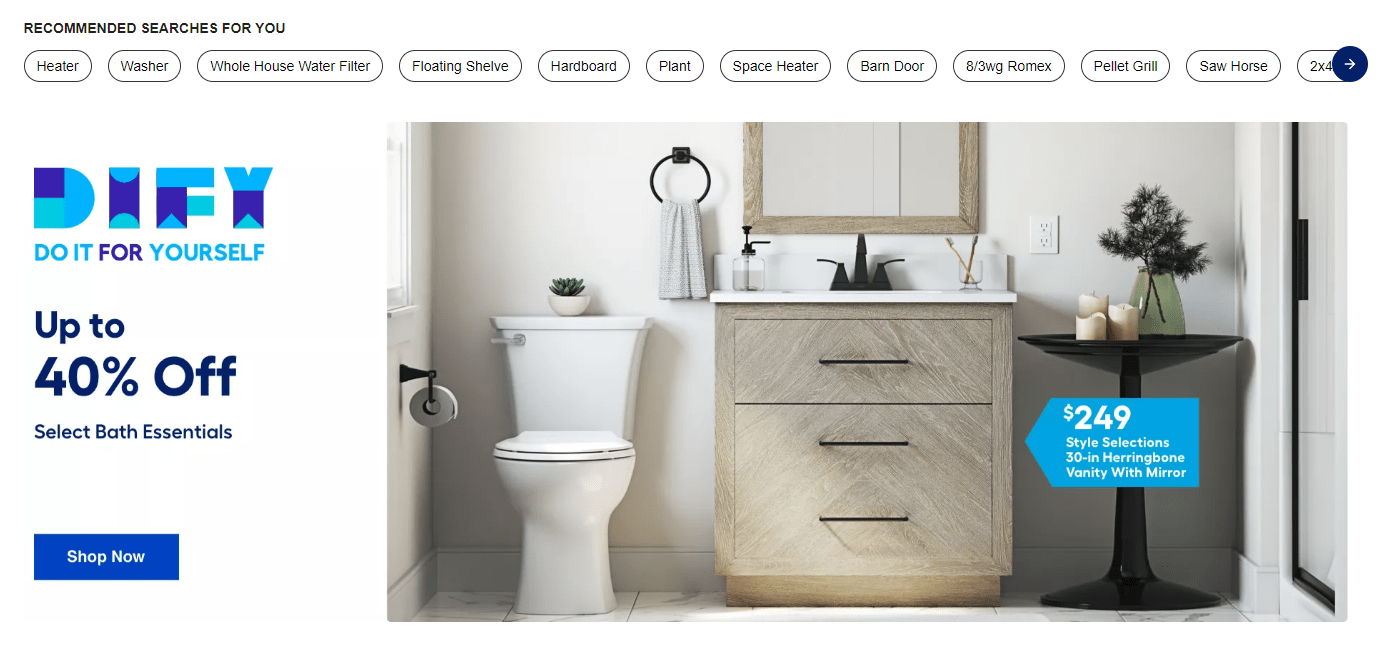
Notice how Lowes proposes “Recommended searches for you” to help navigate their new customers towards categories.
For returning customers, include a line of “Recommended for you” products just below your initial promotions. A good place to start might be a few of the products they’d browsed in a previous visit and related products.
2. Homepage: Product Recommendations Below the Fold
Below the fold on your homepage, you might include less-relevant products. For example, perhaps you have “Popular” products here or those which are “Selling-out quickly!”
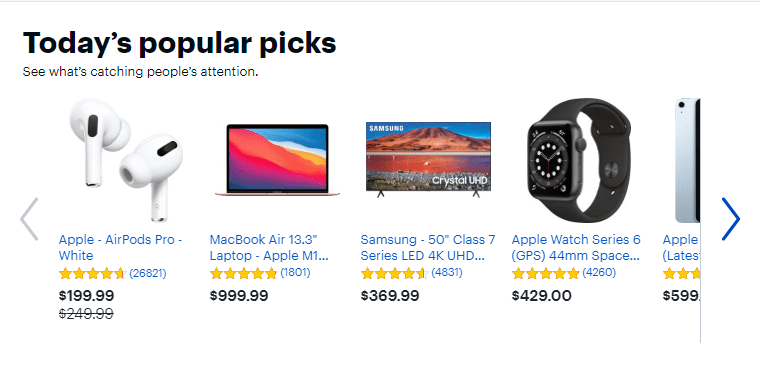
You can mix these popular products in with briefly browsed products that are currently marked down. If the price was what made your customer move on from that product, they might be interested in the new price.
3. Category Pages: Inspire Your Customer Forward
Category pages present an excellent opportunity to show related products that have recently been browsed. Likewise, “What others are browsing” and “Shop the look” style bundles work great in category pages.
Kohl’s offers a “Shop the Look” style of product suggestions from their menswear category page:
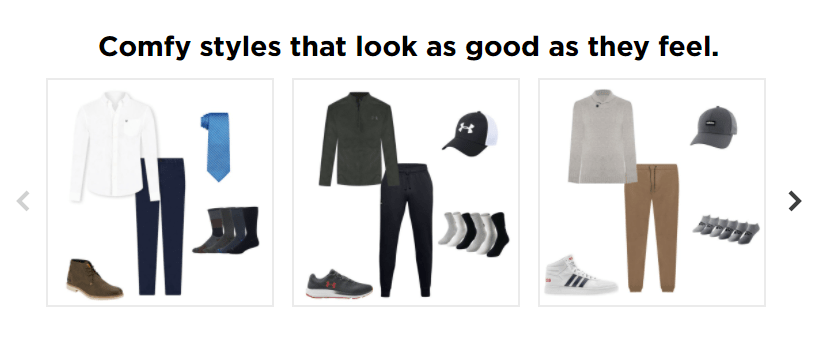
When you click on any given look, you can personalize it to your tastes, thus paving the way for more accurate product recommendations in the future:
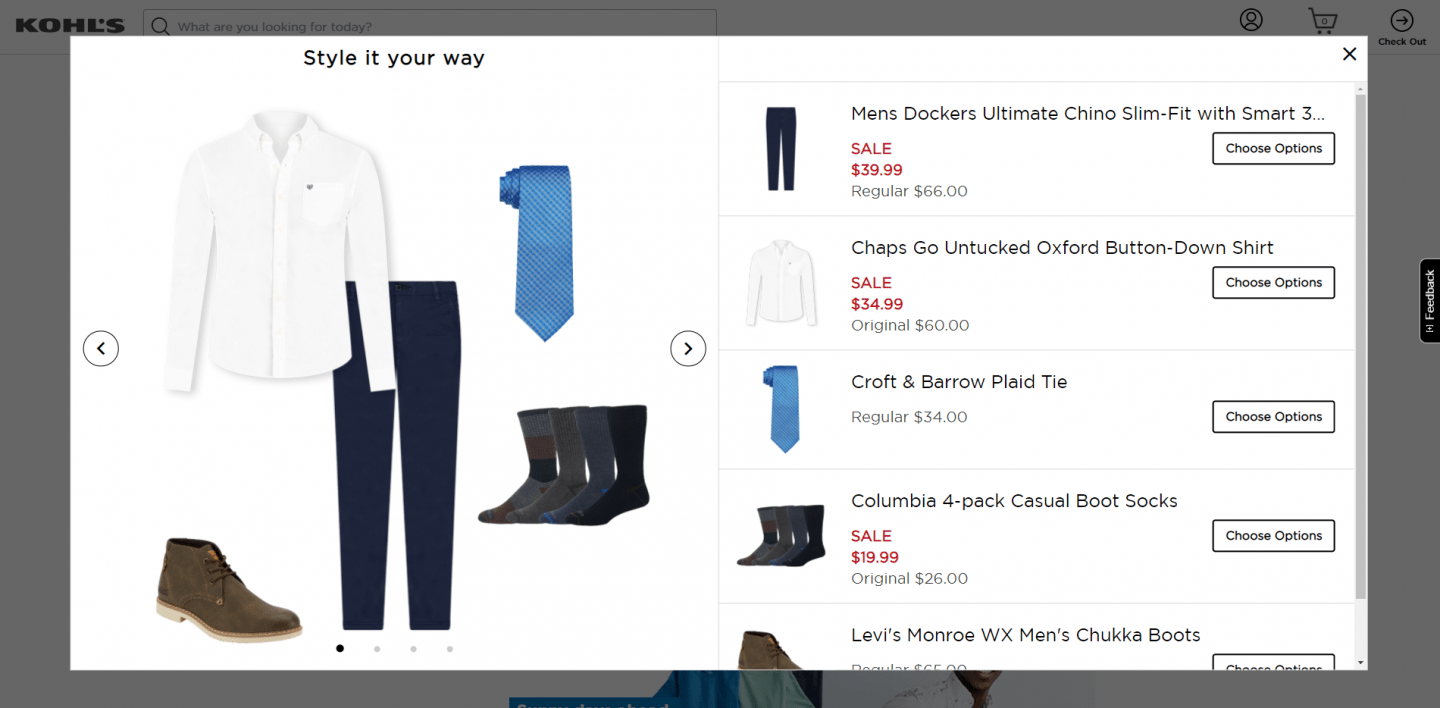
4. Product Pages: Cross-Selling with Product Recommendations
Similarly to category pages, bundle and cross-sell recommendations can be a great way to increase AOV from the product page. It might even be what converts your customer in the first place.
Consider this: your customer wants to make an informed purchase but doesn’t know what they’ll need. For example, say your customer wants to start decorating cakes but doesn’t know where to begin. They might need a piping bag, but what else? As they’re looking at piping bags, you can recommend a spinning cake stand, a bench scraper, and different piping tips for icing. Knowing they can buy one bundle and have everything they need to get started might be what pushes them over the finish line.
Not only will this increase your AOV, it provides a better overall experience to your customers—and one that works particularly well during the holiday season. Take a look at Amazon’s product recommendations. “Frequently Purchased Together” suggestions give customers an easy bundle to get everything they need, in this case, a proofing box for dough, flour, and yeast for pizza making.
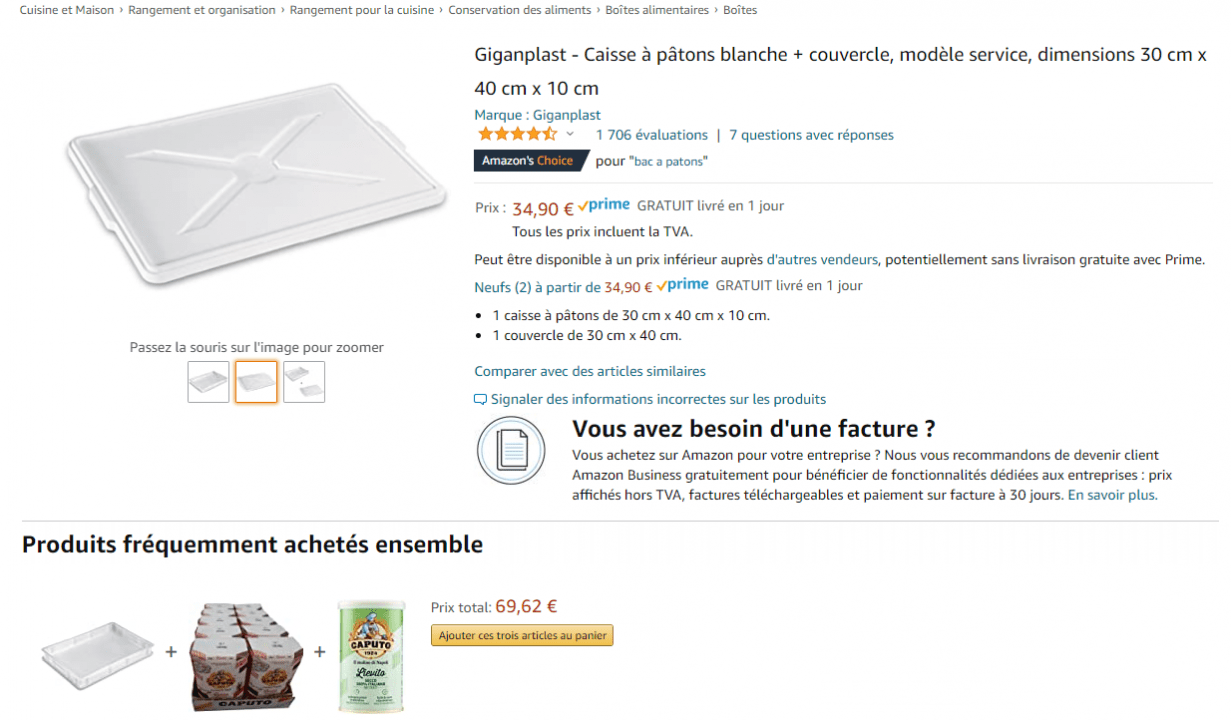
5. Product Suggestions In Your Shopping Cart
Even your cart offers opportunities to cross-sell with personalized product recommendations. Amazon offers similar products, recently browsed products, and wishlist items that may have been forgotten. This is also a great place to propose bundles and accessories if you haven’t already done so.
These are just a few ideas of where you can put the most relevant product recommendations on your ecommerce site. Some will work better than others depending on where they are and your overall product line, so be sure to test where you put recommended products to get the best layout possible.
Just remember to keep your checkout free of distractions. You got your customer to the checkout, you don’t want to lead them away with product recommendations. In case they do get distracted though, you’ve got email for that.
How to Use Product Recommendations in Email Marketing
Much like your site, your email marketing presents a unique opportunity to deliver product recommendations that are targeted and relevant to your customers. They’re a staple in email marketing today—but with customers expecting some kind of product recommendation, you’ll have to be relevant to stand out.
Here are a few best practices to keep in mind:
- Be ultra-specific to your customer: use the data you’ve been gathering, not only in shopping behavior but the way your customers interact with your campaigns. You have a wealth of information at your disposal, use it to make recommendations that make sense.
- Be timely and engaging: Use the moments when your customers are already in that shopping-mindset to offer product recommendations to meet their needs.
- Avoid sending only recommendations: Everything needs context, especially when you’re contacting your customer 1-on-1. Don’t just blast products at them, instead, incorporate those product suggestions into emails you’re already sending for a good reason.
Be smart about the way you incorporate your product recommendations into your emails and other marketing messages. A great place to start is with your lifecycle automations, as you can offer products that aren’t just relevant to your customers’ tastes but also to where they are in their purchase journey.
Which email marketing messages should you add product recommendations to?
1. Welcome Series Automation
There is no other automation workflow that converts more than a welcome email series, with conversion rates pushing 51.94%, according to our Ecommerce Statistics Report for 2020. As your customer signs up to receive emails from you, likely with a sweet incentive, they’re already showing intent. A well-placed product recommendation is powerful when combined with that intent and the incentive you used for sign-up.
Popular products and bestsellers work well as recommended products for the welcome series as you’re just getting to know your customers. Check out how Glossier tempts its customers with fan-favorites.
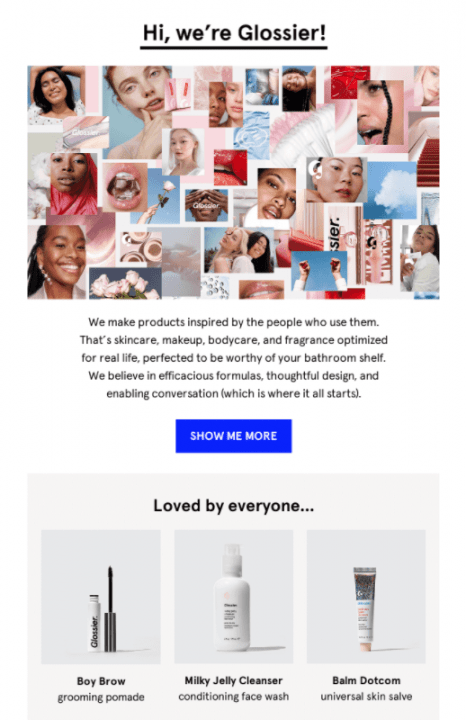
2. Browse Abandonment
For browse abandonment messages, you’ve already collected some valuable information. You can use targeted product recommendations that reflect the items your customers were checking out before their untimely distractions.
Highlight a few of the products they were browsing and mix in a few other products from the same categories. Maybe the products they browsed weren’t enough to convert them, but you have a baseline of interest to propose others that might.
ASOS has a great method for this, showing a few of the styles the customers were browsing, plus similar products in case the first ones weren’t quite right.
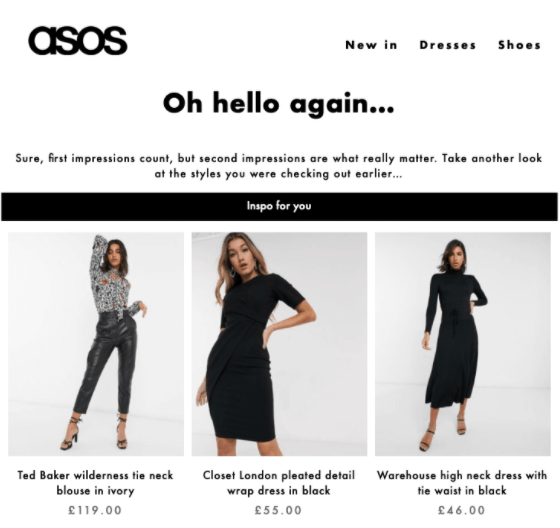
3. Product Abandonment
For product abandonment, your customers display more intent than with browse abandonment. They’ve found a specific product that interests them, which means you have a good idea of their needs.
Smart recommendations would include the abandoned product plus a few similar products and accessories that would pair nicely. Silver Street Jewellers has a great example of this tactic in their product abandonment email.
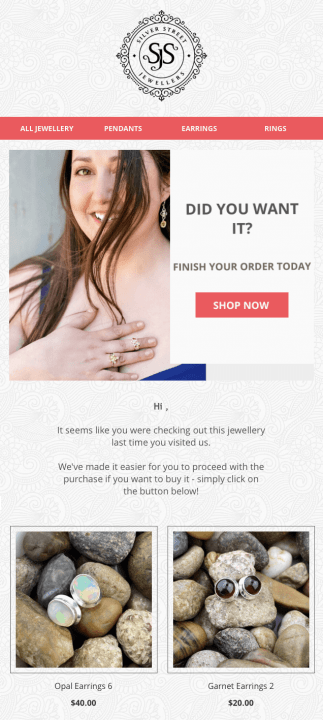
This product attracted your customers’ attention, but just in case it wasn’t “the one,” suggesting a few other products is a great way to bring them back to see more. Alternatively, if your customer is browsing a product that has accessories, putting your bundled products on display is a great way to show your customers that you can provide everything they need.
4. Cart Abandonment
With cart abandonment, your customer is showing the highest level of intent, so you know what they need to see. There are a lot of ways to manage cart abandonment. Show your customers the products they’ve added to their cart, plus add a few others that they’ve browsed to keep them engaged and potentially bring them back to your store.
Perigold does a great job of using the support-tone best practice, “The perfect piece is still in your cart,” while offering some personalized product recommendations as well.
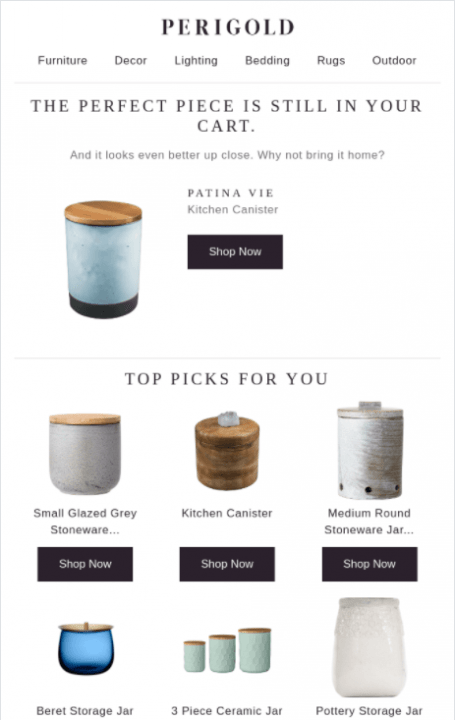
5. Post-Purchase
One of the biggest missed opportunities for product recommendations is in post-purchase automations. In fact, order and shipping confirmations have some of the highest open and click rates across automation workflows. This means that while your customer is eagerly opening and clicking, pleased with their recent purchase, you’re getting products related to their interests in front of their eyes yet again.
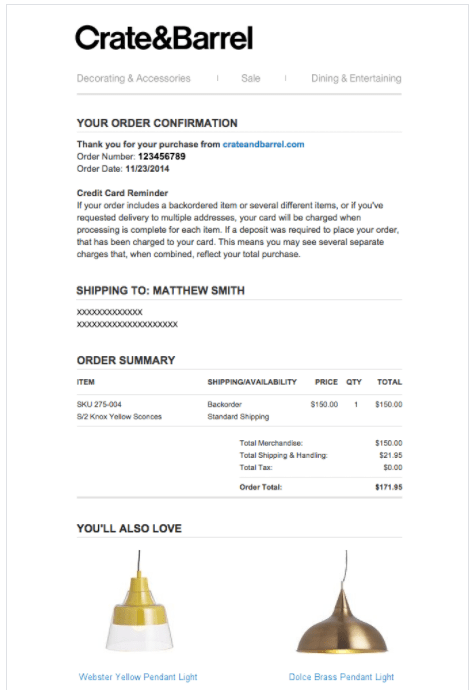
Combined with a nice little “Thank you for shopping” incentive, you’ve got a powerful way to use these messages to convert recent purchasers into repeat purchasers. Crate & Barrel pulls this off with a minimalist order confirmation email and a few hand-picked product recommendations at the bottom.
Regardless of the stage of your customers’ purchase journey, product recommendations always have a place to help create a personalized experience. Whether your customer is just browsing your website or opts-in to receiving emails from you, the perfect product that responds to your customers’ needs is always going to be a welcome suggestion.
By being timely and relevant and thinking about where your customer is in their shopping cycle, you can create product recommendations that make sense and increases sales.
quick links
related features
No fluff, no spam, no corporate filler. Just a friendly letter, twice a month.
